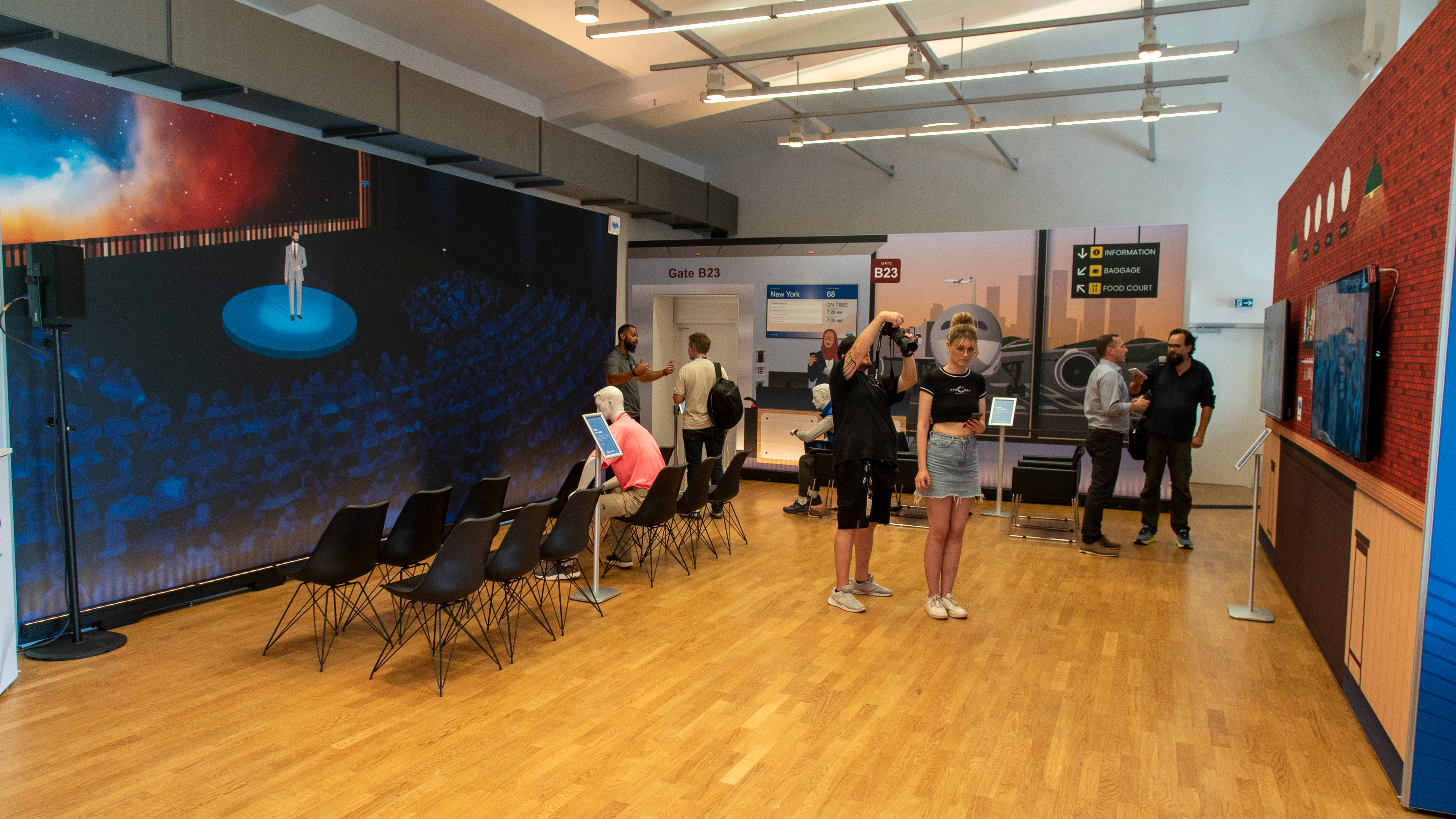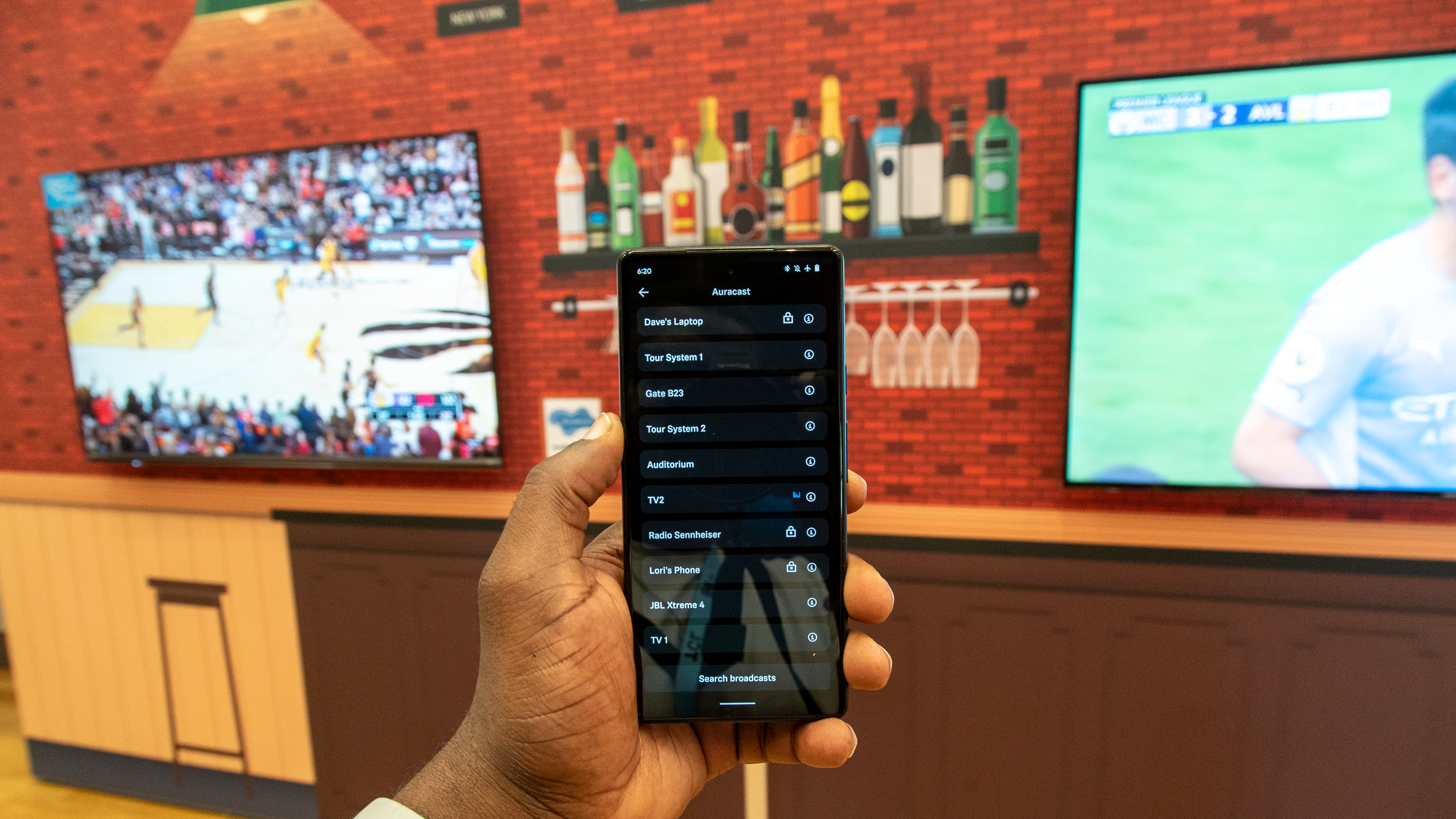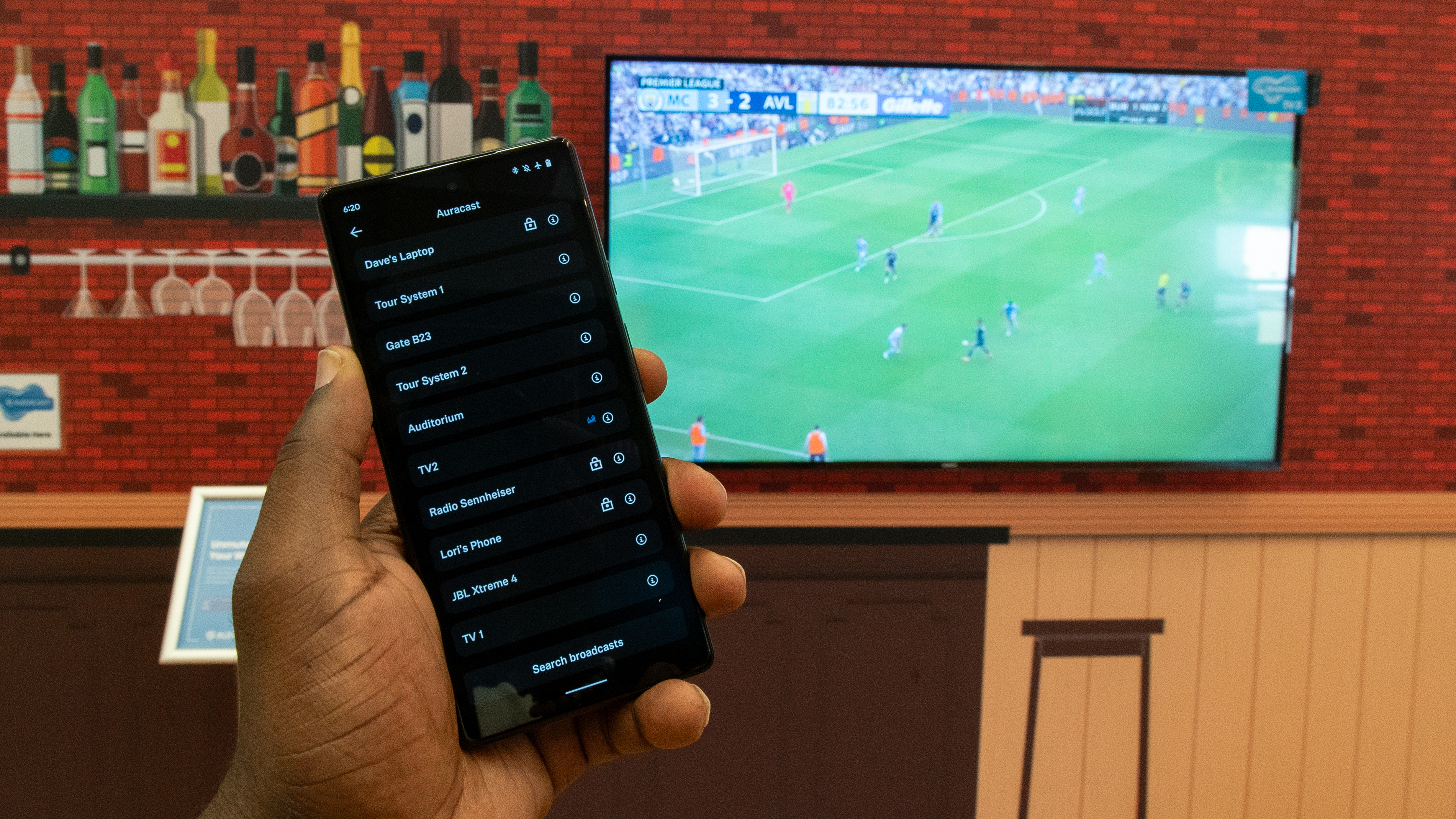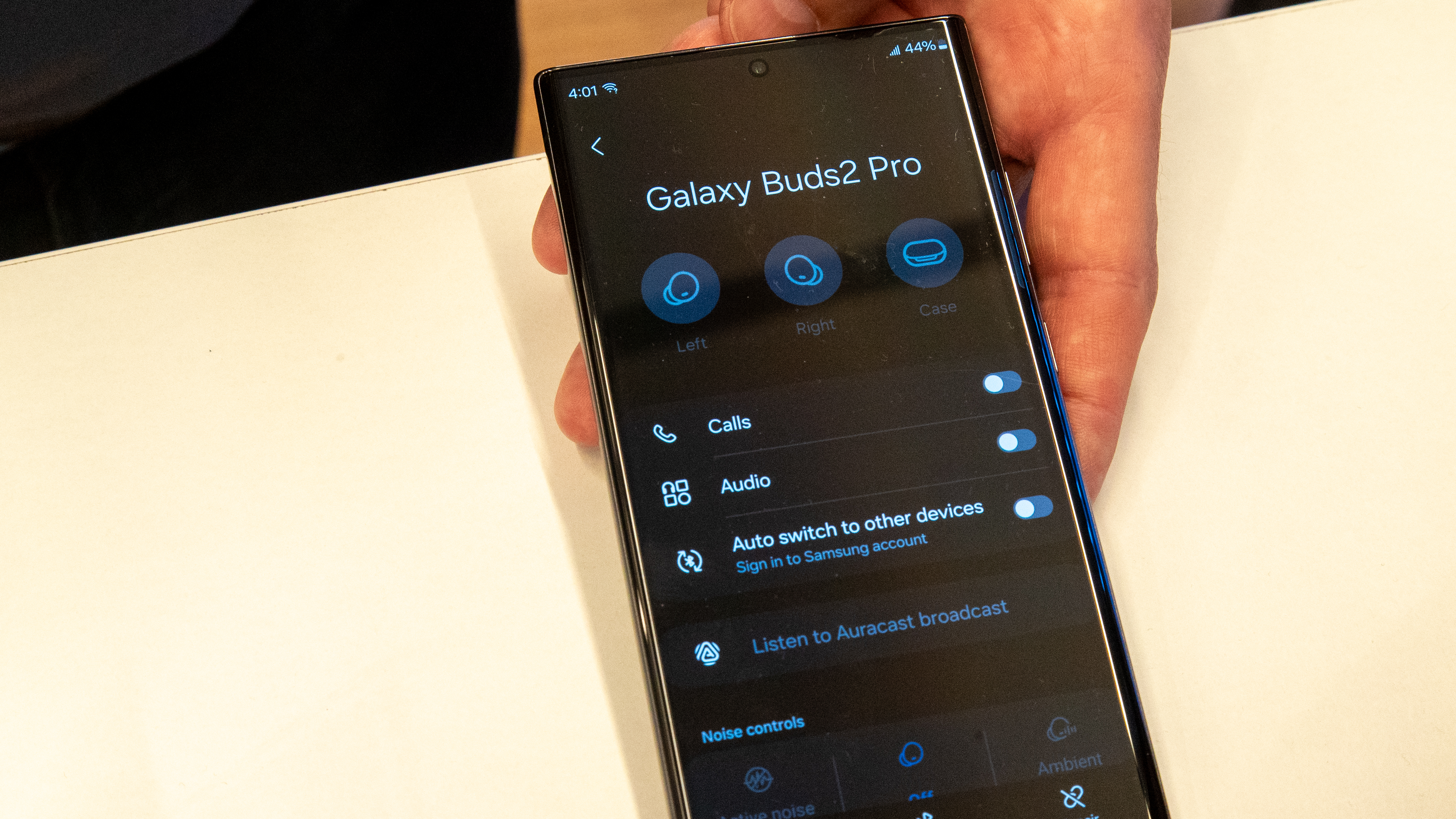I finally tried Auracast, and it feels like Bluetooth's final form
Auracast has so much potential.

Imagine you're at an airport, listening to your favorite tunes on a pair of noise-canceling headphones to drown out the sounds of babies crying and PA system announcements that have nothing to do with you. However, in the middle of your song, you hear loud and clear in your headphones that your group is about to start boarding. And the best part is that you don't need to pause your music every time an announcement is made over the PA system to figure out if it's about your gate, because you're directly connected to your specific gate.
This is just one benefit of Auracast, a technology developed by the Bluetooth Special Interest Group. I got to test out the technology during a demonstration at IFA in Berlin, Germany, and at the risk of sounding overdramatic, this is exactly the kind of future I always hoped we would get with Bluetooth, and it makes me incredibly excited for what's coming.
What is Auracast?

Auracast is a Bluetooth technology that lets users transmit audio to multiple receivers at the same time, acting as a broadcast system. Basically, if you want to share music with your friends, you should be able to do that more easily, thanks to Auracast.
This may sound familiar, as there have been some examples of companies launching audio-sharing features like this, but they tend to be proprietary solutions that only work within a particular ecosystem and have somewhat limited scope.
Auracast uses Bluetooth LE Audio, meaning it has a minimum requirement of Bluetooth 5.2 to work, although you'll want the latest spec (Bluetooth 5.4) to get the most out of the tech. This also means that Auracast can be put on tons of devices without companies needing to build their own solutions.
To make it work, you'll need an Auracast transmitter to start a broadcast. To join a broadcast, you'll need an Auracast assistant, like a phone or smartwatch, which provides the UI necessary to search for and connect to broadcasts (think of Bluetooth or Wi-Fi menus in your phone, for example). Finally, you'll need Auracast-enabled receivers (speakers, hearing aids, earbuds) to listen to the broadcast.
At the moment, Auracast is already supported on a number of Android phones, wireless earbuds, and hearing aids.
Get the latest news from Android Central, your trusted companion in the world of Android
Different Auracast scenarios

During my demo at IFA, I was shown three different scenarios where Auracast could be useful and where Bluetooth SIG feels the technology will shine the most. I was also given the Sennheiser Momentum True Wireless 4 and a Google Pixel phone for the demo.
The first demo was in an airport bar scenario with two televisions set up and different sports games playing at the same time. The idea is that you're in a crowded bar where hearing either game would be difficult. In this case, I opened the Sennheiser app and, using the Auracast menu, was able to see a list of different broadcasts that were available to me. I selected the first TV, a Hisense TV with Auracast built in, and I could hear the audio clearly through my earbuds. I could also easily switch to the second TV outfitted with an Auracast transmitter.
The Bluetooth rep explained that one benefit of the technology is that they're trying to make it as accessible as possible. If your device doesn't support Auracast, you could purchase an add-on to enable the capability to transmit audio.



The second scenario further demonstrates the ability to retrofit existing devices with Auracast. It took place at an airport gate, and the idea is that you're either listening to music or watching a movie while trying to listen out for the gate announcements. Two "people" were set up at the gate, one on a phone and another on a laptop. When we were prompted to connect to their devices to listen in on their content, we were all met with a roadblock: a private broadcast.
One of the features of Auracast is the ability to lock your broadcast so only certain people can listen in, ensuring a private experience for you and your friends. We were given the password so we could listen to their music and movies. The latter was playing on a laptop that did not have Auracast built-in, so a small adapter that was plugged into the USB port enabled the broadcast.



The final demo was conducted in an "auditorium" with a speaker. The idea is that the speaker talks into a mic that transmits the audio to individual receivers, ensuring everyone can hear them clearly.

In fact, tours like the one I was on are also another example of an experience that benefits from Auracast. The Bluetooth SIG representative conducted us through the space using a broadcast transmitted via a mic. We could easily switch between his broadcast and those of the individual spaces to interact with them, which could be ideal for similar tour experiences.
The benefits of Auracast are crystal-clear

Obviously, there's a level of convenience that Auracast brings to the Bluetooth experience. As someone who always has music playing on noise-canceling earbuds, I always find it annoying to have to either turn off ANC to listen out for stop announcements or take out my earbuds completely. Airports are especially tricky, as it can sometimes be hard to hear announcements clearly, even without earbuds in.
But beyond convenience, Auracast also brings a new level of accessibility. The last scenario in the auditorium is a great example of this, as the user was shown utilizing their own Bluetooth device to tune into the broadcast. Hearing aids aren't cheap, and neither are Bluetooth earbuds, so being able to use devices you already own is a huge benefit. That's also why it's so great that devices that don't support it can gain functionality with an add-on, which is great for venues that may not want to shell out tons of money for new devices.
As Hearing Associates points out, additional benefits of the technology for hard-of-hearing individuals include less background noise, reduced battery drain, and the fact that users "won't have to worry about dead zones or spotty audio."
And for users that may not speak the same language, the Bluetooth SIG reps explained that Auracast could transmit translated audio.




But while the Auracast tech is there, the next step is to make it as ubiquitous as Bluetooth itself, and that requires a lot of conversations with various parties. When asked, the Bluetooth SIG representatives said that conversations with venues were already happening to get the technology in more places, but that it's also a matter of getting OEMs on board to adopt the tech and build support into more devices.
For some, that means having the necessary hardware, like a TV with the proper Bluetooth spec, but for others, it just requires a software update. When One UI 6 rolled out, Samsung phones received the ability to scan and see available broadcasts, while One UI 6.1 added the ability to broadcast from a smartphone, and the UI is built into the OS so you don't have to dig into an app to connect to a broadcast. Samsung also brought Auracast to its smart TVs and wireless earbuds through an update last year.
We expect to see an improved Auracast experience arriving on Pixels with Android 15, which should make it easier to broadcast and receive audio. There are already some wireless earbuds, like the Galaxy Buds 2 Pro, that can join broadcasts via an assistant device (like a smartphone), while the JBL Tour Pro 3 have a dedicated UI on the case (which also acts as a receiver).
There are already many products that support Auracast, but this is just the beginning as support extends to more devices and more places. The folks at Bluetooth SIG are confident about its success, and after trying it out for myself, I'm excited about what the future holds for the tech.

Truly wireless, truly the best
If you want the best Bluetooth audio experience, look no further than the Sennheiser Momentum True Wireless 4. Not only do you get superb sound quality and extensive Bluetooth codec support, but they also support Auracast, which essentially future-proofs these amazing earbuds.

Derrek is the managing editor of Android Central, helping to guide the site's editorial content and direction to reach and resonate with readers, old and new, who are just as passionate about tech as we are. He's been obsessed with mobile technology since he was 12, when he discovered the Nokia N90, and his love of flip phones and new form factors continues to this day. As a fitness enthusiast, he has always been curious about the intersection of tech and fitness. When he's not working, he's probably working out.
You must confirm your public display name before commenting
Please logout and then login again, you will then be prompted to enter your display name.
